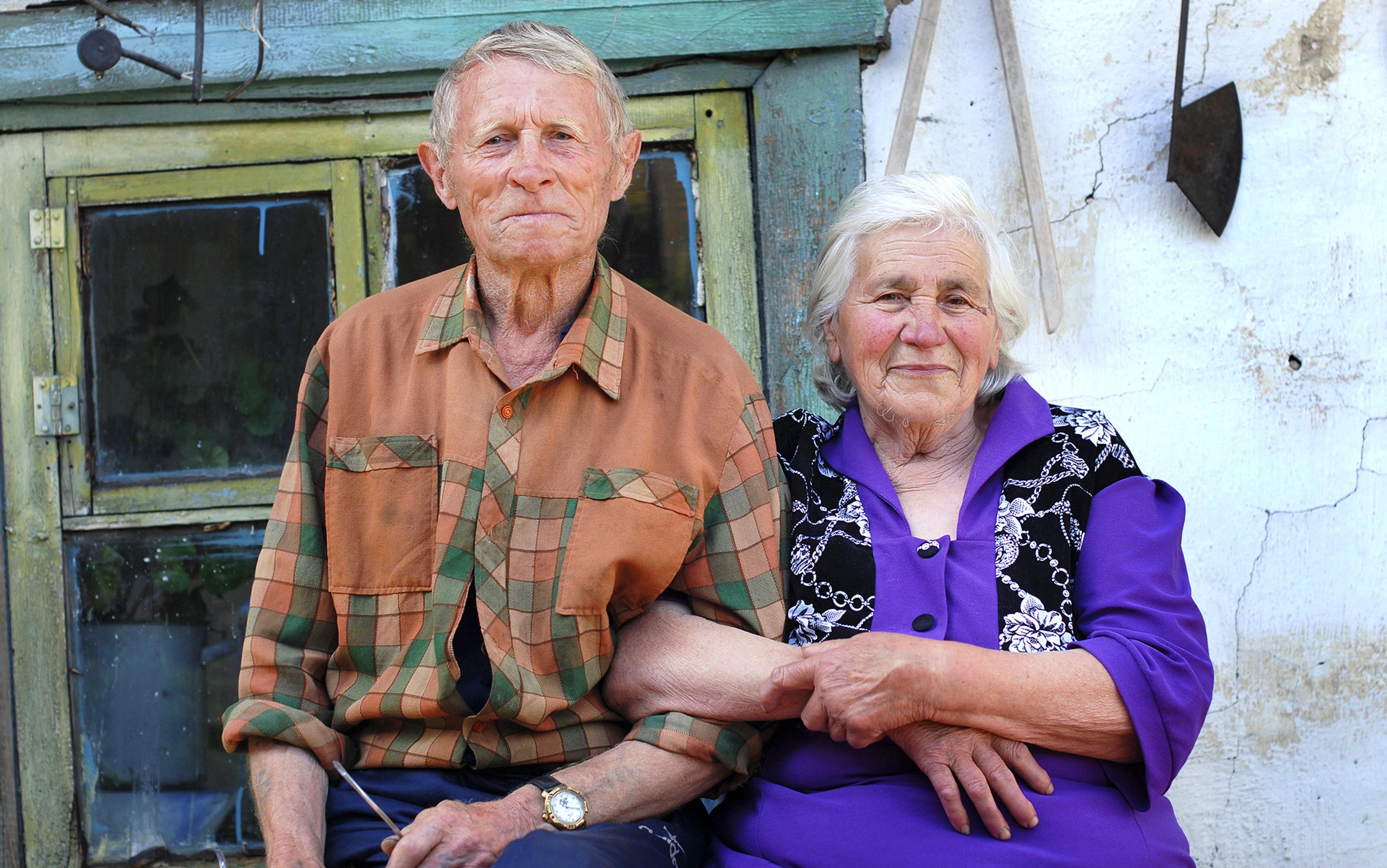Asexuality isn’t a complex. It’s not a sickness. It’s not an automatic sign of trauma. It’s not a behaviour. It’s not the result of a decision. It’s not a chastity vow or an expression that we are ‘saving ourselves’. We aren’t by definition religious. We aren’t calling ourselves asexual as a statement of purity or moral superiority.
We’re not amoebas or plants. We aren’t automatically gender-confused, anti-gay, anti-straight, anti-any-sexual-orientation, anti-woman, anti-man, anti-any-gender or anti-sex. We aren’t automatically going through a phase, following a trend, or trying to rebel. We aren’t defined by prudishness. We aren’t calling ourselves asexual because we failed to find a suitable partner. We aren’t necessarily afraid of intimacy. And we aren’t asking for anyone to ‘fix’ us.
From the book ‘The Invisible Orientation’ (2014) by Julie Sondra Decker, asexual writer and activist
Definitions sometimes reveal more by what they don’t say than what they do. Take asexuality for example. Asexuality is standardly defined as the absence of sexual attraction to other people. This definition leaves open the possibility that, free from contradiction, asexual people could experience other forms of attraction, feel sexual arousal, have sexual fantasies, masturbate, or have sex with other people, not to mention nurture romantic relationships.
Far from being a mere academic possibility or the fault of a bad definition, this is exactly what the lives of many asexual people are like. The Asexuality Visibility and Education Network (AVEN), for example, describes some asexual people as ‘sex-favourable’, which is an ‘openness to finding ways to enjoy sexual activity in a physical or emotional way, happy to give sexual pleasure rather than receive’. Similarly, only about a quarter of asexual people experience no interest in romantic life and identify as aromantic.
These facts haven’t been widely understood, and asexuality has yet to be taken seriously. But if we attend to asexuality, we arrive at a better understanding of both romantic love and sexual activity. We see, for example, that romantic love, even in its early stages, need not involve sexual attraction or activity, and we are also reminded that sex can be enjoyed in many different ways.
Before looking at the relationship between asexuality and love, it is useful to clarify what asexuality is and what it isn’t. The following distinctions are widely endorsed in asexual communities and the research literature.
Asexual people make up approximately 1 per cent of the population. Unlike allosexuals, who experience sexual attraction, asexual people don’t feel drawn towards someone/something sexually. Sexual attraction differs from sexual desire, sexual activity or sexual arousal. Sexual desire is the urge to have sexual pleasure but not necessarily with anyone in particular. Sexual activity refers to the practices aimed at pleasurable sensations and orgasm. Sexual arousal is the bodily response in anticipation of, or engagement in, sexual desire or activity.
Attraction, desire, activity and arousal are not always a package deal. For example, Heloise might find Abelard sexually attractive but not want to have sex with him. Or she might find him sexually attractive, want to have sex with him, but remain celibate for religious reasons. Abelard, in contrast, might not find Heloise sexually attractive, but still want to have sex with her (perhaps to please her, or to have children). Or he might struggle with arousal despite finding her sexually attractive and wanting to have sex with her.
It might be surprising to some that many asexual people do experience sexual desire, and some have sex with partners and/or masturbate. Yet this is the case. Sexual attraction to people is not a prerequisite of sexual desire. Research into these experiences is helping to shape our broader understanding of desire. A study of the masturbatory experiences of asexual people, for instance, suggests that in some cases their desire is ‘non-directed’, ie, it does not focus on anyone. When asexual people do fantasise about others, it is often more abstract, centring on romantic scenarios rather than specific individuals, or not taking place from the first-personal perspective. For example, as one person wrote on an AVEN forum about what asexual people think about when masturbating: ‘it’s scenes in 3rd person; I may have a generic male character which is kind of me, but it’s still separate from me, mentally watched rather than participated in’. Another wrote: ‘I almost invariably think of fictional characters. My thoughts have never involved people I know, and they have never involved myself.’ This has led the asexuality researcher Anthony Bogaert of Brock University in Ontario to coin the term ‘autochorissexualism’ (identity-less sexuality).
Asexuality is a relatively stable, unchosen feature of someone’s identity
Since some asexual people experience sexual desire, albeit of an unusual kind, and do have sex, asexuality should not be confused with purported disorders of sexual desire, such as hypoactive sexual desire disorder where someone is distressed by their diminished sexual drive. Of course, this is not to say that no asexual people will find their lack of sexual attraction distressing, and no doubt some will find it socially inhibiting. But as the researcher Andrew Hinderliter at the University of Illinois at Urbana-Champaign notes: ‘a major goal of the asexual community is for asexuality to be seen as a part of the “normal variation” that exists in human sexuality rather than a disorder to be cured’.
Asexuality is often thought of as a sexual orientation due to its enduring nature. (It should not be considered an absence of orientation since this would imply that asexuality is a lack, which is not how many asexual people would like to be seen.) To be bisexual is to be sexually attracted to both men and women; to be asexual is to be sexually attracted to no one. There is empirical evidence that, like bisexuality, asexuality is a relatively stable, unchosen feature of someone’s identity. As Bogaert notes, people are usually defined as asexual only if they say that they have never felt sexual attraction to others. Someone who has a diminished libido or who has chosen to abstain from sex is not asexual. Because asexuality is understood as an orientation, it is not absurd to talk of an asexual celibate, or an asexual person with a desire disorder. To know that someone is asexual is to understand the shape of their sexual attractions; it’s not to know whether they have sexual desire, or have sex. The same is true of knowing anyone’s sexual orientation: in itself, it tells us little about their desire, arousal or activity.
Knowing someone’s sexual orientation also tells us little about their wider attitudes to sexuality. Some asexual people might not take much pleasure in sexual activity. Some asexual people, like some allosexual people, find the idea of sex generally repulsive. Others find the idea of themselves engaging in sex repulsive; some are neutral about sex; still others will engage in sex in particular contexts and for particular reasons, eg, to benefit a partner; to feel close to someone; to relax; to benefit their mental health, and so on. For example, the sociologist Mark Carrigan, now at the University of Cambridge, quotes one asexual, Paul, who told him in interview:
Assuming I was in a committed relationship with a sexual person – not an asexual but someone who is sexual – I would be doing it largely to appease them and to give them what they want. But not in a begrudging way. Doing something for them, not just doing it because they want it and also because of the symbolic unity thing.
Cutting across the distinction between those who experience sexual attraction and those who do not is the distinction between those who experience romantic attraction and those who do not, ie, the aromantic. Such people don’t feel romantically attracted to others, and typically don’t wish to pursue romantic relationships. However, this doesn’t necessarily mean that they eschew commitment, and some might pursue a QPR – a queer/quasi-platonic relationship, which involves companionship and commitment but avoids ‘traditional’ romantic expectations. A survey conducted by AVEN in 2014 found that 25.9 per cent of asexual people identified as aromantic. Many other asexual people are open to romantic relationships, and have a romantic orientation; considering themselves heteroromantic, homoromantic, biromantic and so on, ie, romantically drawn to people of different, same or both sexes. Similarly, asexual people might embrace non-monogamy for the range of reasons that allosexuals do.
It is especially important to note that neither asexuality nor aromanticism preclude other forms of interpersonal attraction. We can be drawn to people insofar as they are clever, funny, beautiful or emotionally vivacious, and indifferent to those who lack these qualities, without being sexually or romantically drawn to them.
Like other kinds of love, romantic love involves caring for the wellbeing of one’s beloved. It is, ideally, a reciprocal form of love between equals. It differs from familial love in that it is selective – we select our romantic partners – and it differs from familial and friendship love in that we can love only a few people romantically at a time. (Though polyamory has its advocates – see, for example, this piece by Carrie Jenkins – people typically have only one or a small number of romantic partners at a time.) It also differs from familial love in that it is much more conditional, and is more prone to ending. Nonetheless, it is tenacious – good romantic lovers don’t just abandon each other at the first sign of problems. It also often feels unwilled, out of our control, and can be intoxicating. Finally, romantic love involves a desire for physical and emotional intimacy, and the desire to share one’s life in some way with one’s beloved.
When pushed, people might accept that, in some cases, romantic love can exist without sex, for example when people are physically unable to have sex due to a disability, or when they are no longer interested in sex, perhaps due to old age or declining libido. However, the prevailing assumption, both in the philosophical literature and wider society, is that romantic love necessarily has a sexual aspect, or is somehow incomplete in the absence of sexual attraction and activity. A Pew Research Center study in 2016 found that 61 per cent of respondents thought that having a good sexual relationship is very important for a successful marriage.
‘It’s like a “normal” relationship, except when you go to bed you actually sleep, and there’s less genital-grabbing’
Sexual activity is often said to distinguish romantic love from other forms of love and concern, in particular from friendship. Indeed, romantic love is sometimes referred to as ‘erotic love’ or ‘sexual love’, and the expectation that marriages will involve a sexual element is still written into marriage law. In the UK, a marriage is considered ‘voidable’, and can be annulled if it was not consummated. It is the ‘default setting’ for romantic love to include sex, and so it feels reasonable to expect your romantic partner to have sex with you, even to end the relationship if there is no prospect of a sexual element to it. Further, regular sex is generally seen as an indicator of a healthy romantic relationship, and a lack of sex is often assumed to be an indicator of other problems in the relationship. This might be because sex is thought to be the most intense or complete form of intimacy. When we look at asexuality, however, we see that there is no reason to think that romantic love is incomplete without sexuality.
Some examples will help us consider what asexual romantic love might be like:
I’ve been in love before. She invaded my dreams. She monopolised my thoughts. I’d talk to her for hours every day. I’d smile whenever I saw anything that reminded me of her. I’d laugh about something she said days after she said it. I wanted to spend every moment with her. I wanted to share my life with her. There were no secrets. I saw her face when I closed my eyes, I felt her touch after she was gone, I smelled her hair on the breeze, I heard her voice in the silence. She was everything to me. I just wasn’t all that interested in sleeping with her.
From the book ‘Asexuality: A Brief Introduction’ (2012)
It’s like a ‘normal’ relationship, except when you go to bed you actually sleep, and there’s less genital-grabbing. You still love each other and think each other are pretty and cute. Still cuddle and touch affectionately, happy kisses and look forward to spending time with them. Still do favours for them, and go out on dates. Still dream about a life together, and argue about who was supposed to do the dishes. Still share their joy and pain, encourage them to do their best, sympathise with a bad day at work. Still play small jokes on each other, or make small sacrifices to see them smile. Still wake up early for work and watch your partner sleep for a bit, feeling peace and adoration in the quiet morning. Really, aside from the lack of sexual undertones and active genital mashing, I don’t think there’s a difference.
From a comment thread on reddit in 2018
These descriptions make it clear that some asexual people enjoy all the nonsexual aspects of a romantic relationship – that is, a reciprocal form of selective, chosen caring for another that, although conditional, is tenacious and intoxicating. It is also clear that these nonsexual aspects of a relationship are experienced as intimate: they foreground another person. Since these examples of asexual love certainly don’t seem deficient, especially when compared with sexual relationships that lack care or emotional intimacy, it must be something other than sex that makes romantic love romantic.
We lack the space to offer a fuller account of what this ingredient is, but what is interesting about many descriptions of asexual romantic intimacy is the retained emphasis on bodily closeness and familiarity. As the descriptions above showed, it’s not simply trust, shared plans, or cohabitation that constitute romantic closeness, but a kind of embodied intimacy with the other person and the resultant sense of shared world: having them in mind, remembering their smell, having an intimate sense of their presence even when they are absent, and so on. This ‘shared intercorporeality’ as the psychiatrist and philosopher Thomas Fuchs at the University of Heidelberg calls it – which ‘consists in the shared habitualities of interaction, created through mutual gaze, speech, touch, embracement, erotic or sexual encounter’ – has a quality in romantic love that seems different even from the most intimate friendships, and can distinguish romantic from other kinds of love without being necessarily sexual.
The existence of asexual romance helps us to see that any purported connection between romantic love and sex needs to be weakened. But it is also worth remembering that some asexual people have, and enjoy, sex. By definition, asexual people will have sex without being sexually attracted to their partners. Accounts of good sex should take this into account. In taking seriously the experiences of asexual people, we have reason to endorse a broader view of good sex that accommodates different kinds of attraction, desire and enjoyment.
Sex, especially in the context of a romantic relationship, should be intimate and enjoyable, but is sexual attraction necessary? Some might think that mutual attraction is a necessary part of good sex because sex cannot really be consensual if attraction is absent. We certainly agree that consent is a necessary background condition of any good sexual activity. However, we think it is wrong to assume that a person’s sexual attraction to another bears on the question of whether their sexual activity is consensual. Neither the presence nor absence of attraction to someone speaks in favour of whether any subsequent sexual activity is consensual; indeed, sexual assault can and does take place within relationships where mutual attraction obtains.
With this in mind, a critic might respond that sex without attraction, although the product of consent, is still undesired sex, or sex to which someone consents but that they don’t want. It seems plausible that undesired sex can harm someone. In response, we would agree that undesired sex can be harmful, but note that sex without attraction can still be desired, and sex with attraction can be undesired. Asexual people can have sex with a partner to keep them close, and to relax, for example. They can want sex without sexual attraction. This is not necessarily problematic. It is sometimes thought that sex should be wanted ‘for its own sake’, but it is difficult to know what this means exactly. Once you start really thinking about it, sex is usually desired at least partially instrumentally – for pleasure, intimacy etc.
The critic might have a related worry – that in a relationship between an allosexual and an asexual person, especially one with problematic power dynamics, the asexual person is likely to feel pressured into having undesired sex. In response to this, we agree that there might be difficulties in relationships between allosexual and asexual people, but we deny that these are insurmountable or require the asexual person to have undesired sex. Furthermore, unequal power dynamics in a relationship are almost always problematic, and no-one should ever feel pressured into having unwanted sex. Finally, the social norm that romantic relationships ought to be sexual contributes to the felt pressure to have sex in them. This is the norm we are challenging.
Even if our critic agreed with the above, they might still think that sexual attraction to a person is what makes sexual activity intimate and special, for it is sexual attraction that places the other person at the centre of the sexual activity. Without attraction, the other person’s distinct individuality might seem peripheral to the sexual encounter. (A similar argument might be made for the role of sexual attraction within romantic love in general.)
It seems plausible that good sex involves attraction; we just deny it must involve sexual attraction
We have a simple response to this worry: there are many ways to attend to, and foreground, someone in a sexual encounter. Sexual attraction is not sufficient for intimate sex because one can be sexually attracted to someone and have sex with them in the absence of trust, affability or understanding. Sexual attraction is not necessary for intimacy in sex, either, as these properties could be present while sexual attraction is absent.
This conclusion is supported by the fact, much-emphasised by asexual people, that sexual attraction is but one form of attraction among others. For example, Decker notes that:
Plenty of nonsexual and non-romantic kinds of attraction exist, including aesthetic, sensual, intellectual and various kinds of emotional attraction. These can crop up independently of each other or in association with other kinds of attraction, and these elements can be intense, deep, and multifaceted.
We can find someone beautiful, beguiling, funny, charismatic and so on, without finding them sexually attractive as such, and yet those forms of attraction are more than sufficient to animate a sexual encounter, or romantic relationship, and ensure that the other person is foregrounded in one’s attention. It seems plausible that good sex involves attraction; we just deny it must involve sexual attraction.
Just as good sex might not require distinctly sexual attraction, so too enjoyable sex is not always sex that is sexually enjoyable. Some asexual people are indifferent to sexual pleasure but have sex for other reasons. Sexual pleasure is bodily pleasure that can be experienced only through sexual activity. Attention to asexuality reminds us that sexual enjoyment can take many forms. Just as different kinds of attraction can animate a sexual encounter, so there are different kinds of pleasure. While it might be true that, typically, sexual pleasure is a central part of sex for many people, it is important to notice two related points: (1) not all pleasure taken in an activity is pleasure unique to, or that typifies, that activity; and (2) we don’t typically evaluate the overall desirability of an activity solely in terms of its typifying pleasures.
Here an analogy might be useful. Mary might take great pleasure in attending a dinner at the opening of a luxury restaurant, despite being no foodie and having no interest in the intricacies of modern cuisine, but simply because her daughter is the chef. The dinner brings Mary joy through pride and sociability, but her joy is not gastronomic joy. To our ears, it still makes good sense to say that Mary wants to go to the dinner and that she enjoys it. As with dinners, so with sexual activity: someone could want to have sex with another person, take pleasure in having sex with them, but not necessarily take sexual pleasure from having sex with them (at least, if sexual pleasure must involve sexual attraction). This distinction helps to see that sex in the absence of sexual pleasure can still be enjoyable in other ways.
Attending to asexuality helps us broaden our understanding of love and sex. First, the experiences of asexual people in romantic relationships help us note that sexual activity is not necessary for expressing love and intimacy. Second, and more interestingly, the sexual experiences of asexual people are beginning to show that we have overly narrow conceptions of attraction and enjoyment. There are many ways for sexual activity to be good, and not all of them rest on the experience of distinctly sexual attraction, or distinctly sexual pleasure. It is important to challenge these assumptions. Their pervasiveness has led to narrow views of romantic love and sex, and to the unnecessary and painful questioning of otherwise good and enjoyable romantic relationships and sexual experiences.






